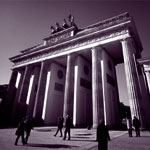 |
|||
 English |
 Nederlands |
 Deutsch |
 по-русски |
|
THE FAKE LEGAL ART MARKET- A View of an Art Historian and a Lawyer -The Art Historian's ViewForgeries have become a money-making industry. It is not a secret that attributions to well-known artists increase the price of an artwork. Trading fake art does not only distort the character of an artist's oeuvre, but does also twist the course of art historical research. Through circulation and recirculation on the market, a forgery becomes even harder to detect and the origin of a commissioned imitation sold on the secondary market is even more difficult to trace. A recent example of a high scale art forgery ring is the Knoedler Gallery case. The New York Upper East Side Gallery was reputable for its collection and name over centuries and had an exquisite clientèle. As it turned out, the gallery was involved in the sale of forged paintings, including Mark Rothko's and Jackson Pollock's. The sale of forgeries brought the gallery a turnover of approximately US$80 million. The scandal chipped away the art market's image, with regard to trust and the so-often disputed authenticity. Authenticity probably is the golden word for the art historian and the art market. In a broad sense, authenticity is the correct attribution of an artwork to an artist. Authenticity, originality and quality largely determine the price of an artwork. The work of the art forger Beltracchi is a recent and interesting example that demonstrates that quality does not necessarily suffer in a forgery. Beltracchi fooled well known experts and art historians, as Werner Spies, with the quality of his paintings and persuaded them that his works were originals rather than reproductions. Beltracchi forged art by searching for gaps in the artist's oeuvre, or lost paintings that he reproduced in a style the original artists could have possibly painted. The objective quality of his paintings was splendid and comparable to the quality of original art pieces - something on which art historians and experts agreed upon. There are still many 'uncovered' forgeries present in museums, in galleries and are being sold and re-sold to collectors and exchanged, borrowed and exhibited among collectors and art institutions. Han van Meegeren and John Myat are only a few names to add to the list of art forgers. No need to say, that forgery causes damages in millions to museums, galleries and collectors. But a forgery may also save money. Let us consider an example: You ask a professional artist to make a painting, that should look like a Picasso, paying not more than a tenth of the price of an original Picasso. You would enjoy the painting hanging over the chimney in your living room, attracting jealous looks from friends and neighbours. What is wrong if forged art brings along joy and admiration, serving the same purpose as the original it replicates? Absolutely a terrible way to look at it, the art historian would say! A painting reflects social thought, the artists emotions that are embedded in a cultural, historical and political context. An original painting is also a documentation of a certain artistic and epochal style. All of these are characteristics that a forged or a copied painting would not be able to represent. By the way, there is nothing to say against a copy as long as it does not claim to be original. Copies of paintings were already made in times of the Renaissance, by workshops and apprentices of great masters, who copied other paintings in order to learn. Nevertheless, a copy would never reach the same level of innovation as the authentic painting. An authentic painting is the origin of an idea. The reputation of grand artists stems from it: they were the first ones to start a style and an idea, which is then followed by many artists over an extended period of time. Art forgery may be compared to plagiarism in academia - expressing not an authentic idea, but the product of someone else's labour and efforts. Art forgery is simply repulsive to art historians and genuine art lovers. To come back to Beltracchii: despite the quality and ingenuity his work caused a deep cut in the art world and fouled art historical research. Putting aside the excellent paintings, admiration and resentment, Beltracchi at the same time provoked a philosophical question of the realm of acknowledged art. Where does art begin and end? Cannot forgery be regarded as some kind of art as well? Back on track to the question with regard to forgeries on the art market, what does a lawyer think and say about art forgery and its market? The Art Lawyer's ViewIt is human nature for people to publicize their prosperity. One of the main devices employed by the wealthiest of us to attain public validation, has become the purchase of art. As the demand for artwork increased substantially since the 19th century, it comes as no surprise that the supply end of the deal has become eager to meet this demand by any means. The unquenchable desire for art sellers to capitalize on this growing trend of art purchasing has brought about a manifest disregard for legal and ethical norms, leading to an aggressive, fake-infatuated art market. Law provides a simple definition of art fakes. Legally, an art object is deemed to be a fake if the seller has falsified or misrepresented its origin. In practice, however, proving such misrepresentation is an immense burden for the plaintiffs in art forgery cases. Victims of deceiving sales tend to be helpless plaintiffs in courts, as the hands of the Courts are tied. Fake Art in the Courtroom One judgment illustrating and explaining par excellence the limitations of the instruments of law in the face of art forgeries is Hahn v Duveen adjudicated at the Supreme Court of New York in 1929. The plaintiff in this case was placed under the duty of proving that his legal opponent made a false statement of authenticity when selling him a painting, stating it to be La Belle Ferronière of Leonardo Da Vinci. One hurdle for the plaintiff was the backing of defendant's claim of authenticity by his trading partner and celebrated art expert Bernard Bernson. Two issues emerge from this reality and both are beautifully highlighted by this legal dispute. Firstly, on the most human of levels, how to compare the word of a mere art enthusiast, the plaintiff Hahn, against that of a certified expert, Bernson. Secondly, the judge in this case, emphasized one crucial point: an expert is the product of his own knowledge. The legal world has a difficult time dealing with experts claiming authenticity merely by glancing at a painting. In the Hahn case, the judge expressed his complete respect for authenticity assessments based on facts. He did not, however, shy away from ridiculing statements of authenticity that are grounded on an expert's 'sixth sense'. But despite this criticism on art experts generally and the close relationship between Bernson and the defendant in particular, the jury sided with the defendant. This is, in my opinion, an unsatisfactory outcome indeed, but it is explainable. A jury is obviously not composed of the finest of art experts - so maybe it is not all that surprising that they took Bernson's word merely based on the fact that he was a known art historian. In addition, the jury found the relationship between Bernson and the defendant was not all that inappropriate in the first place. Why would an art seller not have an otherwise experienced expert and historian in his network? This is not to say that the law is unsympathetic to the hardship of wronged plaintiffs. The judge himself acknowledged the complications of addressing authenticity disputes - but it is difficult for judges to provide such plaintiffs with any redress beyond mere personal empathy. Much like the art expert who is a product of his knowledge, the law is only as good as the tools in its arsenal allow it to be. What emerges is an uncomfortable conclusion. The law provides for a rather simplistic criterion to determine whether an art object is a forgery: the origin of the object must have been misrepresented. But applying this straightforward test to concrete facts, as the Hahn v Duveen case shows, invites a different narrative altogether. In practice, there are numerous certified experts who can make statements of authenticity. But is it inconceivable that an art expert makes a false statement of authenticity to a buyer? And if he does, how can this be determined? Whose word will a judge or jury believe? The legal definition of authenticity and the possibility that a certified art expert is either wrong in his assessment of authenticity or, as Berson was, an ally of the seller, put plaintiffs in a difficult position. The sale of fake art is evidently immoral and legally condemnable in principle, but winning an authenticity dispute obviously is no easy task. Fake Art Outside the Courtroom: The Seller's Playground Hahn sued Duveen, but think of the millions of buyers worldwide whose stories never became the subject of litigation. Sellers placing forgeries on the market have countless tools to circumvent the law and use to achieve their less honourable goals. Disclaimers can help sidestep any potential legal claim, as for instance on e-commerce platforms. One tactic is advertising a piece of art as 'attributed to' a certain artist rather than as belonging to the artist. The phrase 'attributed to the artist' essentially translates to the seller's message that no art expert has confirmed the authenticity of the painting, leaving it to the buyer to hire a specialist and assess the work. By adding such a phrase in the sales contract and the description of the painting, the seller practically makes no statement of misrepresentation of the work within the meaning of the legal definition of art forgery. But are buyers aware of this crucial difference between 'attributed to Picasso' and 'by Picasso'? Most likely, the answered is no! Another tactic used by the sellers of fake art is adding seemingly buyer-friendly contract clauses saying that the sale can be rescinded if the buyer ultimately obtains an uncontested expert opinion that the painting is a fake. Sounds risky? It isn't. Sellers usually rely precisely on how uneducated their customers are and capitalize on this fact immensely. They rightly bet that most buyers will not actually take this opportunity to reach out to an art expert. And even if they do, it will not be difficult to obtain an expert opinion contesting the findings of the buyer's expert. The Law as the Seller's Best Friend? What follows is that the law can do very little to vindicate the most educated and the most naïve art buyers alike. The Hahn case shows that as soon as an art expert steps in the game to back up the authenticity of a painting, a plaintiff will have a very difficult time proving otherwise - even though the expert himself may be wrong about the authenticity of the painting or lean in favour of the defendant. Proving that a seller misrepresented the origin of a painting is difficult for plaintiffs. What is even more worrisome is that most fake art sales are never elevated to case law. There may be two major reasons behind this: the costs of litigation in many, in particular Anglo-American jurisdictions, often dissuade the victims of fake art sales from bringing their case before the courts. Secondly, sellers are often smart enough to bend the rules in their favour. Sellers have many tools at their disposal to place forgeries on the market without misrepresenting them, but without exactly suggesting that they are fake either. The law seems to stand, for all intents and purposes, by the seller's side. His task is easy: all he has to do is avoid providing an actual misrepresentation of origin. Legally speaking, everything else is fair game. Under this unfortunate set of circumstances, the only solution seems to hope that sellers will stop abusing the loopholes in the law. But why would they? Why would a seller give up on the prospect of big cash, when he can safely rely on the inaccessible threshold of misrepresentation and on contract disclaimers? The better, but not necessarily fairer view is that buyers should simply educate themselves. Purchasers need to gain a better understanding of the legal nuances of contract disclaimers and become proactively cautious. They need more insight into what legal misrepresentation means. And how could a buyer do this? Firstly, research these basic concepts of the law. Secondly, play the same game as the seller. Write to him and simply ask, why is the piece of art advertised as attributed to rather then as by? Will the seller finally explicitly state that the paper sketch he is selling is a genuine Picasso? If he does, the grounds to prove misrepresentation are stronger. Finally, buyer, learn more about the world of art experts. Their expertise is often the make or break of authenticity disputes. But as the judge in the Hahn case warned, their expertise should not be taken for granted. Art trade may have generally emerged into a market, but it is not an ordinary market. Simply because Picassos are sold on eBay alongside second-hand clothes, the purchase of art should not be treated in the same manner. If the buyer's only option is to outsmart the seller, then so be it. But let us not denigrate artworks, the most valuable testament to our past, to our heritage, and to human sensibility, merely because of the unfriendliness of the law. Joint conclusion of the art historian and the lawyer Whereas the art historian is appalled by the very fact that forgeries are made and even traded, the lawyer is inclined to (perhaps grudgingly) accept this economic reality. The art historian wishes to protect art as such, the lawyer concentrates on protection of justified interests, particularly those of the buyer, whose interests seem to have less chance prevailing in the court room. The art historian cannot help feeling some admiration for good quality forging, as an art in itself. The lawyer wishes to create a level playing field for art trade, original and fake alike.
Julia, Art Historian, & Alice Draghici, Lawyer Maastricht, September 2016 Julia and Alice are students of the Maastricht Faculty of Social Sciences and the Law Faculty respectively. They participate in the inter-faculty MARBLE project Art and Law: the Legal status of cultural property - a comparative analysis. MARBLE stands for Maastricht research based learning. It is a programme which offers motivated and high-performing students the opportunity to broaden their knowledge in a particular area as well as to equip them with additional research skills. The MARBLE project Art and Law is coordinated by Prof. Hildegard Schneider and Vanessa Tünsmeyer and offered by the Maastricht Centre for Arts and Culture, Conservation and Heritage (MACCH). This article is the result of a collaboration of Murk Muller and the MARBLE students in the area of art law.
| |||
| Vervoer | Handel en Industrie | Contact | Colofon |
| Incasso Duitsland | Art Law | Netwerk | Anwaltsladen |
| Kosten Mahnverfahren | Duits procesrecht | DBLA | LEXML |
| Publicaties & Interviews | Duits contractrecht | FAQ | Doorzoek mmrecht.com |
-_la_Belle_Ferroniere.jpg)
